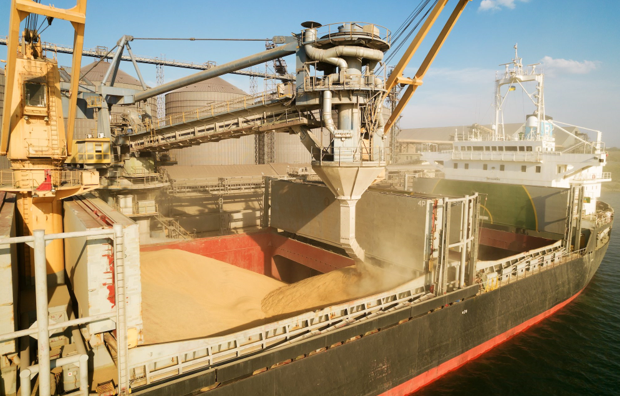In a move apparently designed to wade off food shortages in the United States, Washington has eased sanctions on Russian agricultural products, including fertilizers, placed on Moscow over the crisis in Ukraine.
The Office of Foreign Assets Control attached to the Treasury Department stated this in a document titled “Russian Harmful Foreign Activities Sanctions Regulations” sighted by Investogist.
Read also; Commission freezes at least 30 accounts of illegal loan companies
The document stated all all transactions prohibited by the Russian Harmful Foreign Activities Sanctions Regulations, 31 CFR part 587 (RuHSR), that are ordinarily incident and necessary to: (1) the exportation or reexportation of agricultural commodities, medicine, medical devices, replacement parts and components for medical devices, or software updates for medical devices to, from, or transiting the Russian Federation; (2) the prevention, diagnosis, or treatment of COVID-19 (including research or clinical studies relating to COVID-19); or (3) ongoing clinical trials and other medical research activities that were in effect prior to March 24, 2022, are authorized.
For the purpose of clarity, the document went further to define agricultural commodities to include;
- Food for humans (including raw, processed, and packaged foods; live animals; vitamins and minerals; food additives or supplements; and bottled drinking water) or animals (including animal feeds);
- Seeds for food crops;
- Fertilizers or organic fertilizers; or
- Reproductive materials (such as live animals, fertilized eggs, embryos, and semen) for the production of food animals.
Exemptions also cover medicine, medical devices, software updates, and replacement parts for medical devices and Covid-19-related medical components.
Many analysts expect the EU to soon mirror the measure that has been adopted by the US.
Information available on the website of the Office of the United States Trade Representative shows that;
- Russia was the United States’ 20th largest supplier of goods imports in 2019.
- U.S. goods imports from Russia totaled $22.3 billion in 2019, up 6.8% ($1.4 billion) from 2018, and up 22.3% from 2009.
- The top import categories (2-digit HS) in 2019 were: mineral fuels ($13 billion), precious metal and stone (platinum) ($2.2 billion), iron and steel ($1.4 billion), fertilizers ($963 million), and inorganic chemicals ($763 million).
- U.S. total imports of agricultural products from Russia totaled $69 million in 2019. Leading categories include: snack foods ($8 million), tree nuts ($6 million), other vegetable oils ($3 million), essential oils ($3 million), and other dairy products ($2 million).
- U.S. imports of services from Russia were an estimated $1.8 billion in 2019, 2.2% ($38 million) more than 2018, and 50.6% less than 2009 levels. Leading services imports from Russia to the U.S. were in the transportation, travel, and financial services sectors.
Tradingeconomics.com reports that United States Imports from Russia of Fertilizers was US$1.28 Billion during 2021, referencing the United Nations COMTRADE database on international trade.
Russia is one of the world’s most significant suppliers of fertilizer and related raw materials such as sulphur. It was the largest exporter of urea, NPKs, ammonia, UAN and ammonium nitrate last year, and the third-largest potash exporter (see table below). In phosphates, traditionally dominated by China and Morocco, Russia is a major exporter with a combined 4mn t/yr of DAP/MAP shipments last year. It is the fourth-largest sulphur exporter. At today’s prices, typical Russian spring export volumes would account for over $2bn/month in revenue.
The major markets for Russian fertilizers and related raw materials include Brazil, the EU and US.
Western sanctions on Russia have disrupted shipments of key agricultural inputs around the globe. Fertilizer is key to keeping corn, soy, rice and wheat yields high. Growers are scrambling to adjust.
The pivot can be seen in agricultural powerhouse Brazil, where some farmers are applying less fertilizer to their corn, and some federal legislators are pushing to open protected indigenous lands for the mining of potash. In Zimbabwe and Kenya, small farmers are reverting to using manure to nourish their crops. In Canada, one canola farmer has already stockpiled fertilizer for the 2023 season in anticipation of even higher prices ahead.
Farmers elsewhere are making similar moves. Reuters spoke with 34 people on six continents, including grain producers, agriculture analysts, traders and farm groups. All expressed concern about the cost and availability of fertilizer.
In the United States alone, fertilizer bills are expected to jump 12% this year, after rising 17% in 2021, according to American Farm Bureau Federation and U.S. Department of Agriculture (USDA) data.
Exports from Russia of some fertilizers have already been somewhat curtailed by the export controls imposed by the government late last year, with a two-month ban on ammonium nitrate shipments in place since the start of February.
Nnamdi Maduakor is a Writer, Investor and Entrepreneur
